This step by step diy woodworking project is about 12×12 shed roof plans. This article features detailed instructions for building a gable roof for a 12×12 gable roof. Take a look over PART 1 of the project to learn how to build the frame for the shed. This roof is designed to keep the costs under control and to save materials as much as possible.
When buying the lumber, you should select the planks with great care, making sure they are straight and without any visible flaws (cracks, knots, twists, decay). Investing in cedar or other weather resistant lumber is a good idea, as it will pay off on the long run. Use a spirit level to plumb and align the components, before inserting the galvanized screws, otherwise the project won’t have a symmetrical look. If you have all the materials and tools required for the project, you could get the job done in about a day.
Projects made from these plans
12×12 Shed Roof Plans
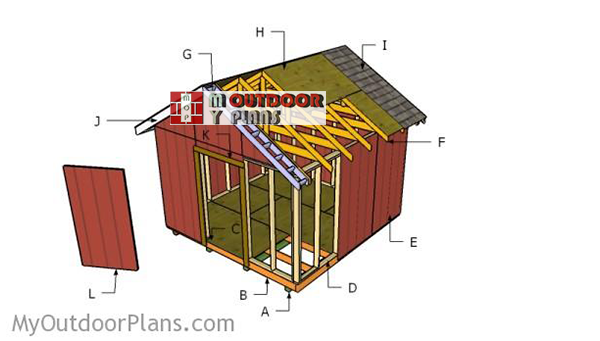
Building-a-12×12-shed
Cut & Shopping Lists
- F – 7 pieces of 2×6 lumber – 144″ long, 14 pieces of 2×4 lumber – 96″ long, 14 pieces – 23 1/2″ long, 7 pieces – 35 1/2″ long TRUSSES
- F – 4 pieces of 2×4 lumber – 21 3/4″ long, 8 pieces – 22 1/2″ long BLOCKINGS
- G – 8 pieces of 2×4 lumber – 96″ long, 36 pieces – 7″ long, OVERHANGS
- H – 4 pieces of 3/4″ plywood – 10 3/4″x93 3/4″ long, 2 pieces – 48″x96″ long, 2 pieces – 48″x48″ long, 2 pieces – 45 3/4″x96″ long, 2 pieces – 45 3/4″x96″ long ROOF
- I – 270 sq ft of tar paper, 270 sq ft of asphalt shingles ROOFING
- 7 pieces of 2×6 lumber – 12′
- 35 pieces of 2×4 lumber – 8′
- 7 pieces of 3/4″ plywood – 4’x8′
- 1 piece of 1/2″ plywood – 4’x8′
- 3 pieces of T1-11 siding – 4’x8′
- 270 sq ft of tar paper, 270 sq ft of asphalt shingles
- 500 pieces of 2 1/2″ screws
- 500 pieces of 1 5/8″ screws
- wood glue, stain/paint
- shed hinges + latch
- rafter ties
- 1 1/2″ structural screws for ties
Tools
![]() Hammer, Tape measure, Framing square, Level
Hammer, Tape measure, Framing square, Level
![]() Miter saw, Drill machinery, Screwdriver, Sander
Miter saw, Drill machinery, Screwdriver, Sander
Time
Related
- PART 1: 12×12 Shed Plans
- PART 2: 12×12 Shed Roof Plans
- PART 3: 12×12 Shed Door Plans
Building a 12×12 shed roof
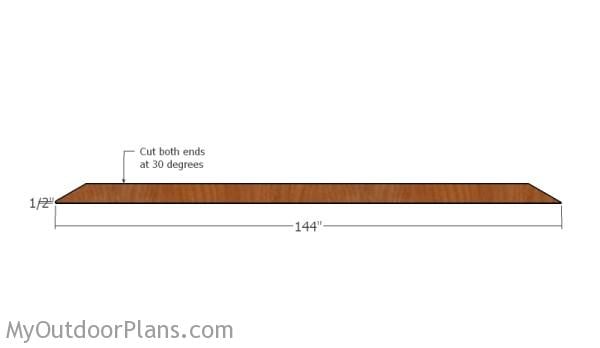
Building the bottom rafters
Build the bottom rafters from 2×6 lumber.
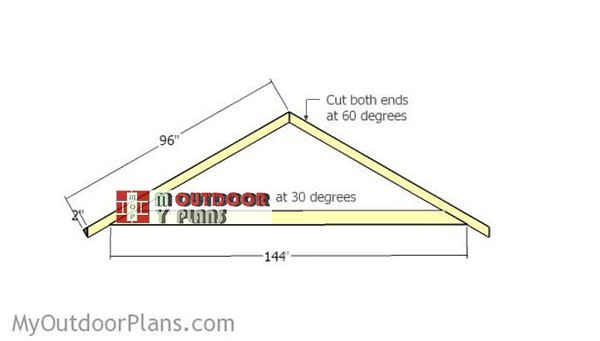
Building-the-trusses
The first step of the project is to build the rafters for the shed. Use 2×4 lumber for the regular rafters and 2×6 lumber for the bottom rafters. Cut both ends of the rafters at 60 degrees (set the miter saw at 30 degrees) and both ends of the bottom rafters at 30 degrees (set miter saw at 60 degrees).
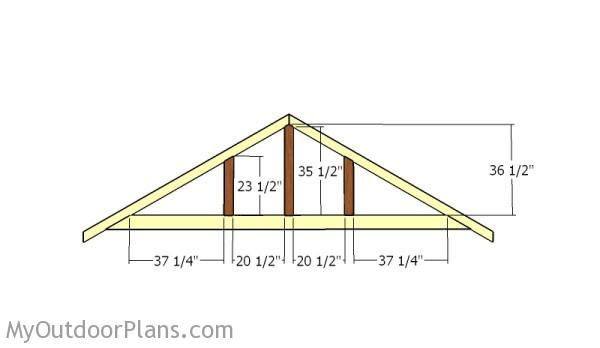
Fitting the vertical supports
In addition, you have to add vertical supports to the trusses. Cut the top of the vertical supports at 30 degrees (set miter saw at 60 degrees). Smooth the edges with sandpaper.
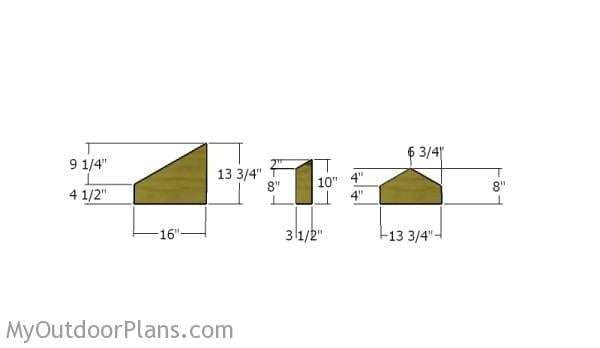
Building the gussets
Use 1/2″ plywood for the gussets. Mark the cut lines on the plywood sheet and get the job done with a saw. Smooth the edges with sandpaper.
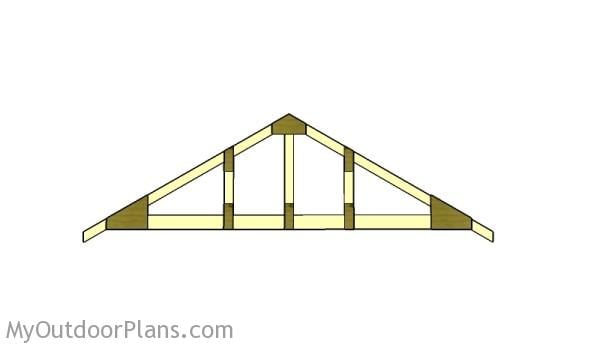
Fitting the gussets
Fit the gussets to the joints, as shown in the diagram. Drill pilot holes and insert 1 5/8″ screws to lock the components together tightly. Add glue to the joints.
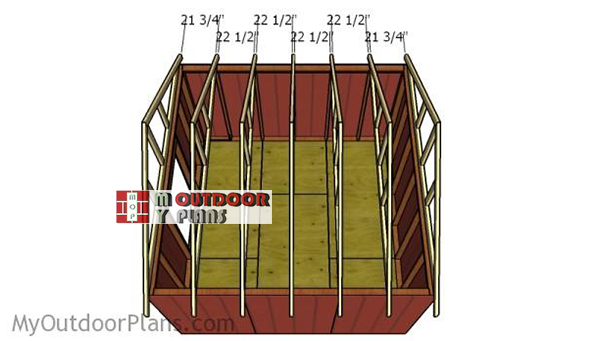
Fitting-the-trusses
Fit the trusses to the top of the shed. Make sure you place the trusses 24″ on center. Use hardware to lock the bottom rafters to the top plates. Use a spirit level to plumb the trusses.

Fitting the blockings
Fit 2×4 blockings to the top rails, between the rafters, if you want to make sure the shed is properly insulated.

Fitting the gable ends
Cut the panels for the gable ends from 5/8″ T1-11 siding. Fit the panels to the structure of the shed and lock them into place with 1 5/8″ screws/nails.
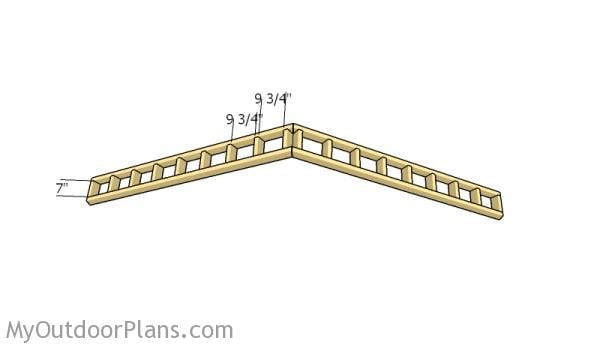
Building the overhang
Build the overhangs from 2×4 lumber. You can adjust the size of the overhangs to suit your needs. Drill pilot holes through the rafters and insert 2 1/2″ screws into the blockings.
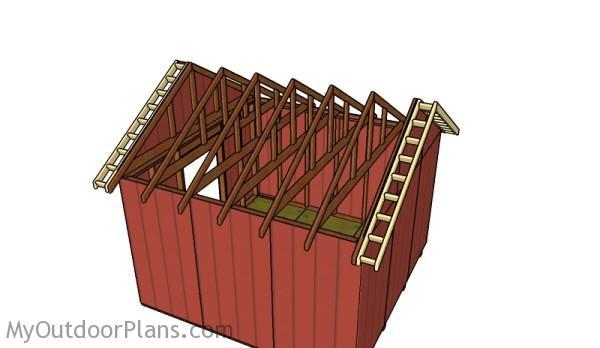
Fitting the overhangs
Fit the overhangs to the 12×12 shed. Drill pilot holes and insert 3 1/2″ screws into the frame.
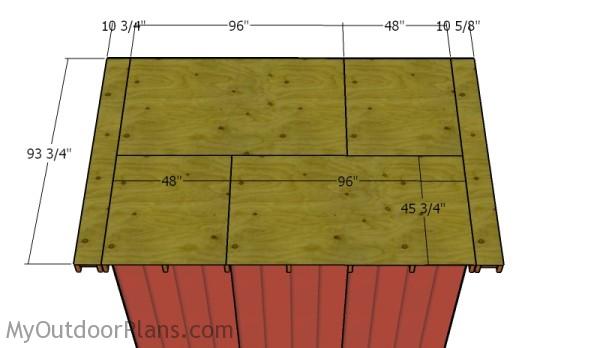
Fitting the roofing sheets
Attach 3/4″ plywood sheets to the rafters, using the pattern shown in the diagram. Drill pilot holes and insert 1 5/8″ screws, every 8″ along the rafters. Leave no gaps between the tongue and groove sheets.
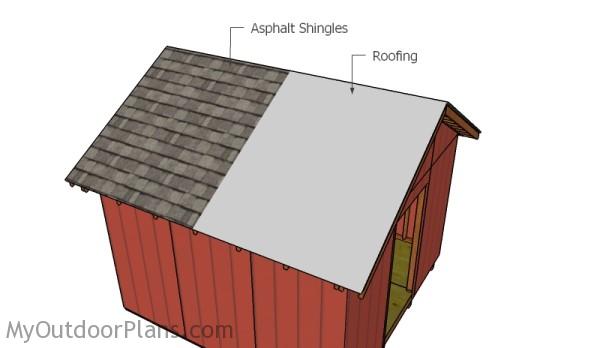
Fitting the roofing
Cover the roof of the shed with roofing felt, making sure the strips overlap at least 2″. Secure the tar paper to the plywood sheets with roofing staples. In addition, cut a 12″ piece for the top ridge. Fit the side drip edges over the roofing felt, while the bottom drip edges should be fit under.
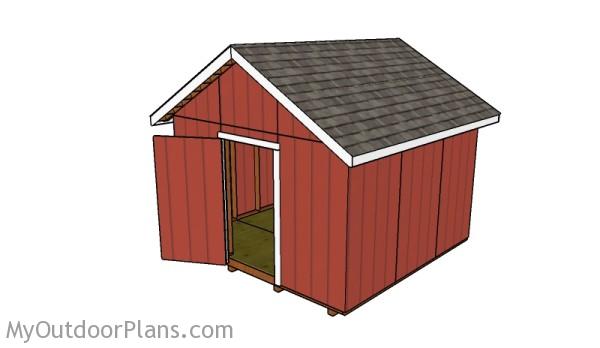
12×12 shed plans
Fill the holes with wood putty and let them dry out for a few hours. Smooth the surface with 100-220 grit sandpaper and remove the residues with a damp cloth.
Top Tip: Apply a few coats of paint or stain to the components, to enhance the look of the project. Check PART 1 of the project to learn how to build the frame of the shed and PART 3 to learn how to build the door for the shed.
This woodworking project was about 12×12 shed roof plans free. If you want to see more outdoor plans, check out the rest of our step by step projects and follow the instructions to obtain a professional result.






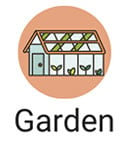
28 comments
when i cut both ends at 60 and 30 they dont line up. could you help explain why?
When I say to cut both ends at 30 degrees, it means the boards need to have both ends at 30 degrees, after you make the cut. This means you need to make a 60 degree cut with your saw. When I say you need to cut both ends at 60 degrees, it means that the boards need to have both ends at 60 degrees, after the cut. This means you need to make 30 degree cuts with your saw. I hope this helps!
I’m still lost on this. So I make 2×6’s 60 degree ends and the 2×4’s 30 degrees?
No. The 2x6s will have 30 degree ends. The 2x4s will have 60 degree ends.
The 2×6 needs 60* cut other wise your going to have about a 14/12 pitch the 2×4 are 30* just did my shed and that is how i got to have overall trusses to be about 46 1/2 inches tall everything worked out perfect other than that it was perfect
No I think you mistaken,if you use your angles where you say it won’t work the 2×6 needs the 60 and the 2×4 needs the 30. If both 2xw on each side of the truss are 60 your building the top of a church lol. 2×4 needs 30,s and the 2×6 needs 60.
Further down you just said the opposite of what you said here….
The gussets made of 1/2″ plywood: are you attaching those to the front AND back of the trusses or just to the front only?
To the front only, but if you feel they aren’t strong enough you can fit them to both sides.
the diagram for the 30 degree cuts on the 2×6 truss bottom shows a thickness of 1/2 inch at the ends of the 2×6. this would require a 0 degree straight cut on the end of the 30 degree taper. this would take off the overall length of the 144″ 2×6. can you explain.
It is the other way around. You make the angled cuts directly on the 144″ long rafter, after leaving the 1/2″ at the ends. If it’s too complicated, you can skip this and make the cuts without leaving the 1/2″. I left the 1/2″ so you don’t have to cut out of the side siding, when fitting the trusses (the siding will make the shed wider than 144″).
what will be the pitch and overhang?
The pitch is 7/12 and the overhang is about 10″
I noticed on the next page you add roof trim using 1 x 6. Shouldn’t the roof sheets be applied AFTER installing the trim and won’t this throw off the measurements for cutting the roof sheets?
No, this will not affect the measurements for the roof sheets. Everything is well thought out.
How about metal drip edge? It’s not in the material list but you mentioned it in the instructions. If I use drip edge then I can’t install roof trim? BTW. I’m planning on using your plans this weekend!
You have to install the drip edge over the trims. Good luck, let me know how it goes.
i made 60 degree cuts on the bottom rafters and 30 degree cuts on the top rafters. the peices of wood are no where near lining up. what am i doing wrong? the bottom rafter length is 144 after the cuts and the top onea are 96 after the cuts
It’s the other way around. It says cut at 60 degrees which means the piece will have 60 degrees after you make a 30 degree cut. Make 60 degree cuts at both ends of the bottom rafters.
Do the gamble ends go over the siding or do i have to account for the gambles ends thickness before i slap the sid9ling on? in other words is the siding sandwiched between the truss and the gamble end?
Gable ends? Do you mean the overhangs? Yes, I have considered the thickness of the siding. The overhangs go over the siding sheets.
On the list for the siding you only call for 12 sheets, if my calculations are correct this wont be enough for the gable ends, can you clarify? thanks
That’s true. I have added the 3 sheets needed for the gable ends, on this list.
The 2 x 6 must be cut at 60 degrees and the 2 x 4 at 30. Otherwise they won line uo. Hopefully the corrections will be made so no one else waste a 2 x 6 x 12 like I did today. I was able to reuse the 2 x 4 on the center braces
Sorry for that Ray, but the diagrams say cut AT 30 degrees. That means the ends need to have 30 degrees AFTER you make the cut. The diagrams doesn’t say to make a 30 degree cut. Sorry for the confusion again.
Send blueprints to my email
Please read the FAQs: https://myoutdoorplans.com/faq/
Confused about the blockings and what they are and how and where exactly they go? Any pictures from anyone? Are the rafters sturdy enough by using the rafter ties?